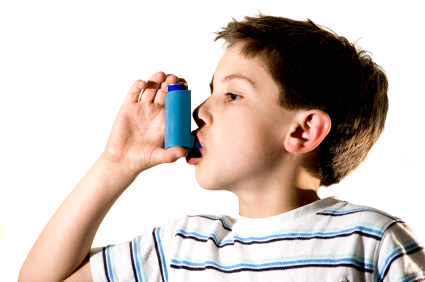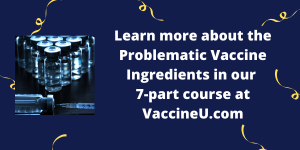Heather Simpson, Vaxxter contributor
Every day, at least 11 people die from asthma in the United States alone. According to AsthmaMD, this adds up to more than 4,000 direct deaths per year and contributes to nearly 7,000 deaths each year. Most recent data available at the CDC shows that asthma in children accounts for 80,235 hospital visits, 546,000 emergency visits, and more than 2.4 million physicians visits annually, adding considerable economic pressure on the healthcare system and representing substantial morbidity for children.
Just for comparison, in the 17 years between 1985 and 2002, a total of 13,621 children and adults were hospitalized with measles. Asthma kills more people than measles, but in recent years, just a few cases of measles have been enough to create an outrageous uproar in the media, leading to endless calls to get vaccinated. However, little is said about asthma.
Vaccines and Asthma
In 1913, Charles Richet won the Nobel Prize in Medicine and Physiology for his experiments with animals, mostly dogs. He proved that injecting an animal with serum or foreign proteins leads to sensitization and sometimes, anaphylaxis. The hypersensitive state would persist in the individual for life.
“….But it is a much harder task to state when the anaphylactic period has actually passed. Most writers incline to the view (and I myself would think them correct in their view) that the anaphylactic state never passes. In other words, once a subject has been anaphylactized and consequently modified in his chemical constitution, then the subject can never go back to his former state. Return to normal is not possible. Subjects have been known who, even after four years from the date of the first serum injection, were still sensitive to the unleashing reaction.”
More recently, a study published in 2019 by Louisias et.al. points out that asthma results in a “complex relationship between genetic predisposition and environmental modifiers of the immune function.”
Vaccines are certainly external exposures, so they should be considered to be within the definition of “the environment.” Vaccines stimulate an artificial immune response by bypassing the usual channels of infection. The result is atopy, the genetic tendency to develop allergic reactions such as allergic rhinitis, asthma, and atopic dermatitis (eczema).
A person can become sensitized, and then allergic, to food, pollen, mold, chemical, or any component in a vaccine. In this JAMA Pediatrics study, researchers discuss how the MMR vaccine causes people to become allergic to the antibiotic, neomycin. MMR vaccine contains about 25 mcg of neomycin sulfate. Contact hypersensitivity and systemic allergic reactions to neomycin are well known. There is a general agreement that children who have had anaphylactic reactions to topical or systemic administration of neomycin should not be vaccinated.
Oil adjuvants increased the risk of anaphylaxis. In a study that evaluated children who went into anaphylaxis after vaccination with the pandemic H1N1 vaccine, the study concluded:
“AS03 was an adjuvant used in the pandemic influenza vaccine. It seems to be associated with a higher risk of anaphylaxis when compared with other vaccines.”
Layers of the Immune System
The immune system is designed with layers of defense: the skin, the mucous membranes, and the GI tract. Vaccination bypasses these built-in protections when foreign matter is injected into a muscle. It is picked up by white blood cells (macrophages) and carried to various organs for deposition. Some of the vaccine ingredients can lead to the creation of IgE immunoglobulins, antibodies associated with allergies and anaphylactic reactions. This exaggerated reaction leads to long term inflammation in the bronchial tree, leading to asthma.
Asthma deaths took a sharp turn upward in boys and young men in the UK during the mid-1960s. This caused other countries to analyze their health statistics; by the late 1980s, all developed western countries with reliable statistics reported an increase in asthma deaths. The CDC reported that asthma deaths had increased by 46% from 1980 to 1989 across all races and ages, but the number of asthma-related deaths was disproportionately greater in blacks and in children. Interestingly, the MMR vaccine was first released int 1963 and the correlation was never a consideration.
A study published in 2000 concluded after skin tests were done on nearly 14,000 subjects that vaccinated and unvaccinated children were almost equally likely to be atopic. However, vaccinated children were more likely to have a lifetime history of asthma (9.5% vs. 4.5%), hay fever (6.2% vs. 5.2%), and history of allergies or allergic reactions (20.5% vs. 10.8%).
Today, many studies, such as this one, show an association between vaccines and asthma by 2 1/2 years of age.
The Role of Antibiotics in Asthma
The incidence of asthma began to increase in the 1950s, coincidentally with the availability of antibiotics. Children who lived in rural communities, in contact with nature, and who use antibiotics infrequently are known to have a lesser risk of atopy. One such lifestyle, called anthroposophy, was introduced and developed in the early 1900s by Rudolf Steiner. This practice is concerned with all aspects of human life and well-being.
In 1999 a study was published in The Lancet on the health of children in Anthrophsophic families. Researchers concluded that lifestyle factors related appear to lessen the risk of atopic disease in childhood. In another paper published in the Journal of Clinical and Experimental Allergy, the results show that if antibiotics are prescribed during the first year of life, there is a 305% increase in the risk of developing asthma compared to children who have never been prescribed antibiotics. Even if antibiotics are not prescribed until after a child is 1-year of age, there is still a 64% increase in asthma compared to children who were never given antibiotics.
Do allergies begin in utero?
The short answer is perhaps they do. In an article published in Pediatric Allergy and Immunology, researchers concluded:
More recently, a range of evidence shows that many of these genetic factors, together with in utero environmental exposures, lead to the development of allergic disease through altered immune and organ development. Environmental exposures during pregnancy, including diet, nutrient intake, and toxin exposures, can alter the epigenome and interact with inherited genetic and epigenetic risk factors to, directly and indirectly, influence organ development and immune programming.
One does not need to be a scientist to see that vaccinating pregnant women with the flu shot and the Tdap only increases the likelihood that the newborn will have allergies or other allergic conditions. This likelihood only increases with the load of vaccines the child will have during childhood.
The use of antibiotics by the pregnant mother also affects the child in utero in a dose-related manner. Two courses of maternal antibiotics increased the risk of asthma by 58%, eczema by 7%, and hay fever by 46%, compared to a single dose of antibiotics.
The Benefit of Childhood Infections
In 1989 David Strachan described the decrease in the prevalence of childhood hay fever and atopic dermatitis in association with the presence of older siblings. He concluded that the declining family size, improved household amenities, and higher standards of personal cleanliness may have reduced the opportunities for cross-infection in young families and may have resulted in the widespread clinical expression of atopic disease.
Vaccines, antibiotics, and our Westernized way of life make children more susceptible to asthma and allergies. Dr. Tetyana Obukhanych explains in this video the mechanism through which measles and the common childhood diseases lessen the risk of asthma and allergies. It is time to re-evaluate the premises of the germ theory and what avoidance of infection is doing to long term health.
There is much to be said about the importance of fever.
++++++++++++++++++++++++++++++
 Like what you’re reading on Vaxxter.com?
Like what you’re reading on Vaxxter.com?
Share this article with your friends. Help us grow.
+++++++++++++++++++++++++++++++
Heather Simpson is a Canadian journalist who has been dedicated to researching, writing and bringing awareness to some of the most important issues of our time. For the past 6 years, she has been involved in environmental, vaccine choice and human rights activism. She is the mother of a vaccine-injured teenager. Since the realization of her daughter’s injury, she has devoted her time to continued researching vaccines and wellness. With this knowledge and experience, she is motivated to share and educate others about the risks, side effects and real dangers associated with vaccines.





